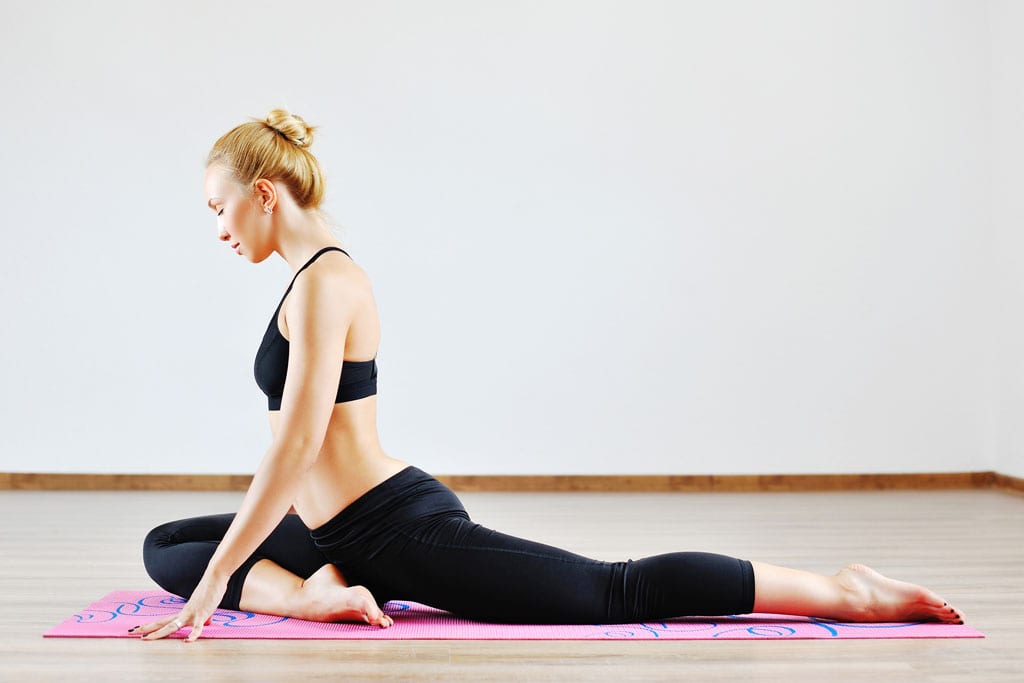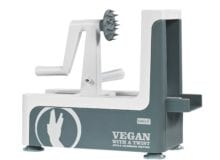3 classic yoga moves for desk workers
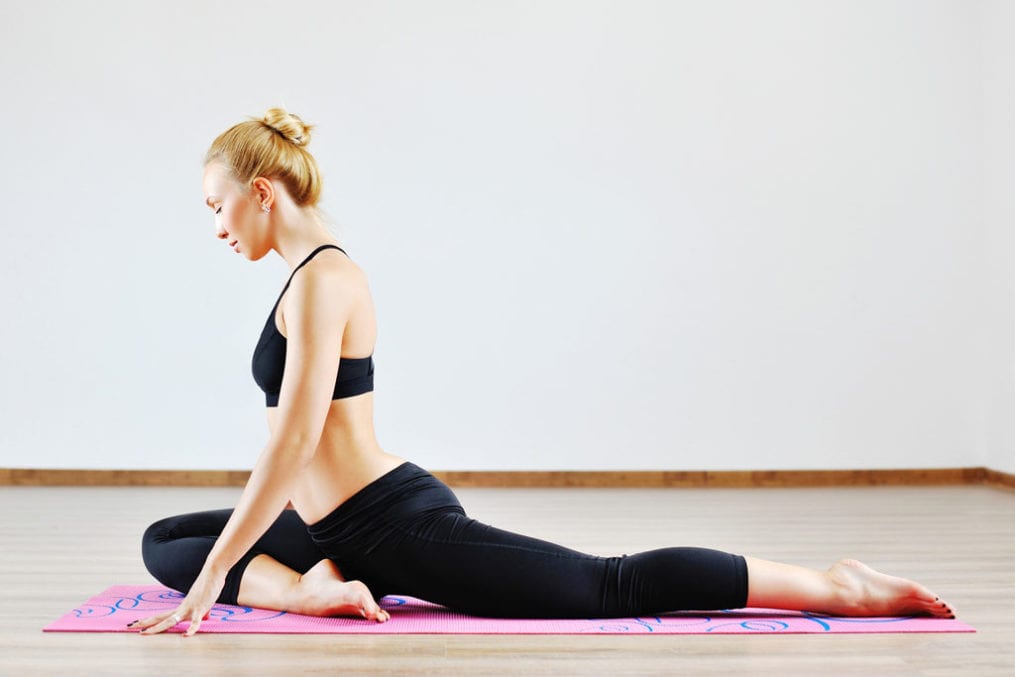
Sitting at your desk (or kitchen table) all day, hunched over your laptop? It won’t surprise you to learn that this can contribute to back pain and a bad posture. We like to do a bit of yoga every day to combat the physical effects of desk working. Not only is it great for banishing aches and realigning posture, it can help to reduce stress levels and improve focus – as well as get you a good night’s sleep.
These three poses are classic yoga moves that will help everyone. We’ve taken them right back to basics so even complete newbies can get involved. Grab your yoga mat – or a bath towel if you don’t have one – and let’s get started.
Downward dog
Performed correctly, downward dog can stretch out the legs, glutes and hips, as well as relieving tension in your lower back. It strengthens the wrists, shoulders and back muscles, too.
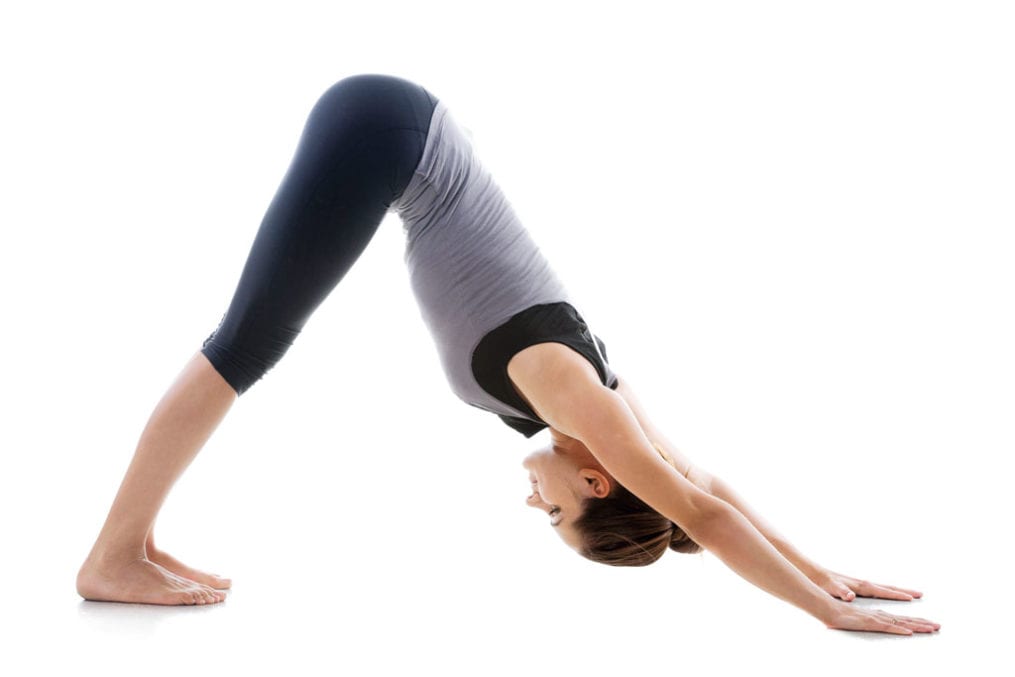
Step 1
Begin on your hands and knees, keeping hands shoulder-width apart, wrists slightly in front of shoulders, knees underneath your hips. Spread your fingers and engage your hands from knuckles to fingertips to connect to the mat and help spread the weight.
Step 2
Suck in your lower abdomen. Engage your upper back by spreading your shoulder blades apart and pulling them down. Inhale and tuck toes under; exhale and engage your abs to lift your hips, into an upside down V-shape.
Step 3
Lift your ‘sitting bones’ in your bottom towards the ceiling and roll your upper thighs inward slightly, pressing firmly through your hands; pull your shoulders back.
Step 4
As you exhale, stretch your heels towards the floor and straighten your legs without knocking the knees, keeping your core engaged with a tilt in your pelvis. Create opposing forces: hips moving up and back, feet and hands on the floor.
Step 5
Relax your head between your arms, but don’t sink into your shoulders. Look through your legs or up towards your belly button; hold for five long breaths. Exhale and bend your knees to the floor.
Pigeon pose
Desk working can result in tight hips, but this classic yoga move can help to open them up. It lengthens the hip flexors and helps to increase the range of motion of your femur in the hip socket. Here’s how to do it…
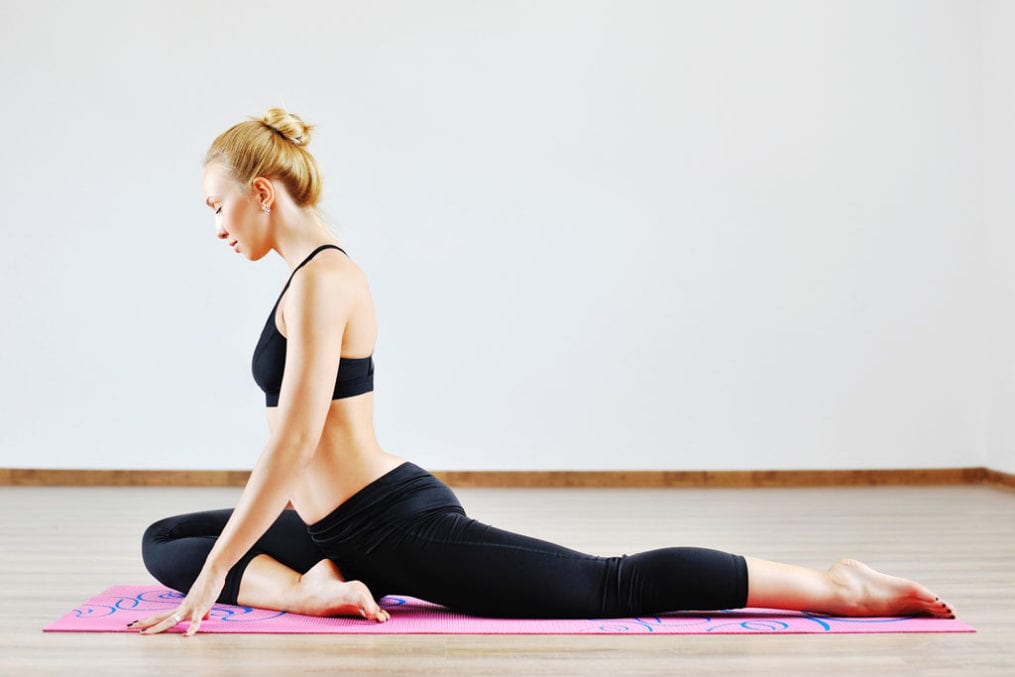
Step 1
Begin by getting into downward dog (as above). Engage your thighs and tilt your bottom upwards, bending your knees if you need to, but keeping your arms, back and hips in a straight line.
Step 2
From here, bend your right knee and bring your leg forward as if stepping into a lunge, but instead bring your right knee down towards your right wrist. You should end up with your right shin parallel to the front of your mat – or as close as is comfortable for you.
Step 3
If you have a yoga block at home, you can place it under your right glute to help keep the hips square and facing forward, and knees safe. Encourage your left hip forward, which will pull the right hip back, using your arms for support – you’ll feel the stretch immediately.
Step 4
Keeping the back straight, fold forwards and take your elbows down to the floor, relaxing your upper body.
Step 5
Keep pulling your left hip forward, right hip back. Stay in the pose for five full, slow breaths, then repeat on the other side.
Plank
The plank is a classic core-strengthening move, which can also activate your arms, bum, back and legs. It helps to build your stability, prevent injuries and improve overall posture.
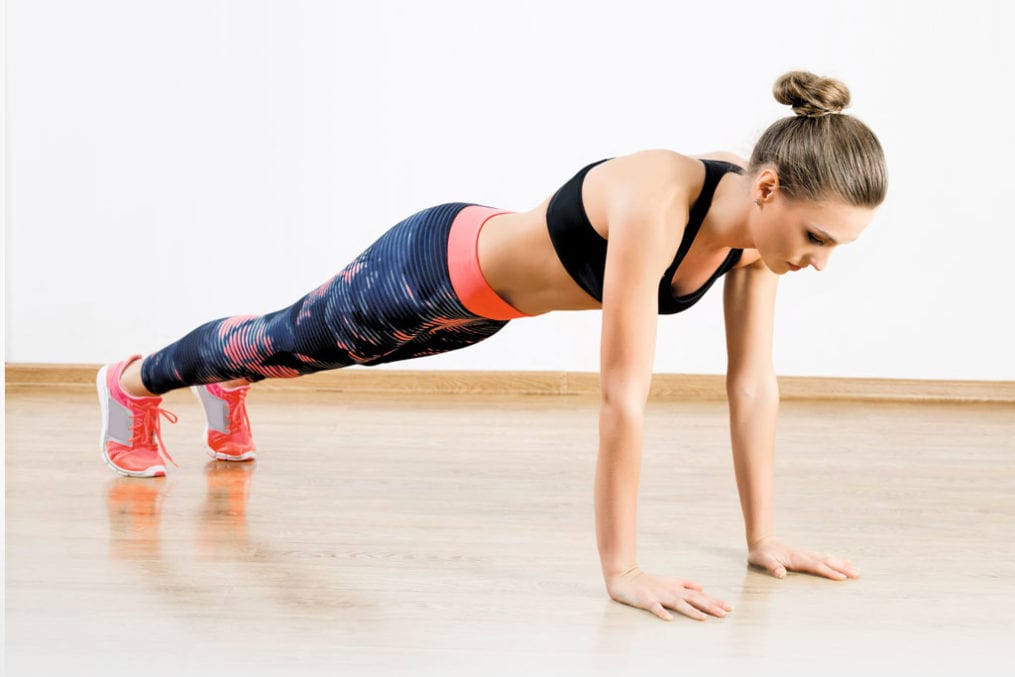
Step 1
Plant your hands directly under your shoulders, like a push-up, and ground your toes into the floor; squeeze your glutes as you lift your body into one straight line, with ears, shoulders, hips, knees, and ankles on the same plane.
Step 2
Engage your core by imagining your belly button pulling in towards your spine and don’t let your bottom dip.
Step 3
Look at a spot on the floor about a foot beyond your hands so that your head is in line with your back.
Step 4
Contract the belly button and glutes as hard as you can and hold for 20 seconds, or longer if you can; if your back begins to bow or shoulders sink, stop.
Step 5
Take slow, controlled, deep breaths throughout.
Read more: 5 top types of yoga and their benefits explained
